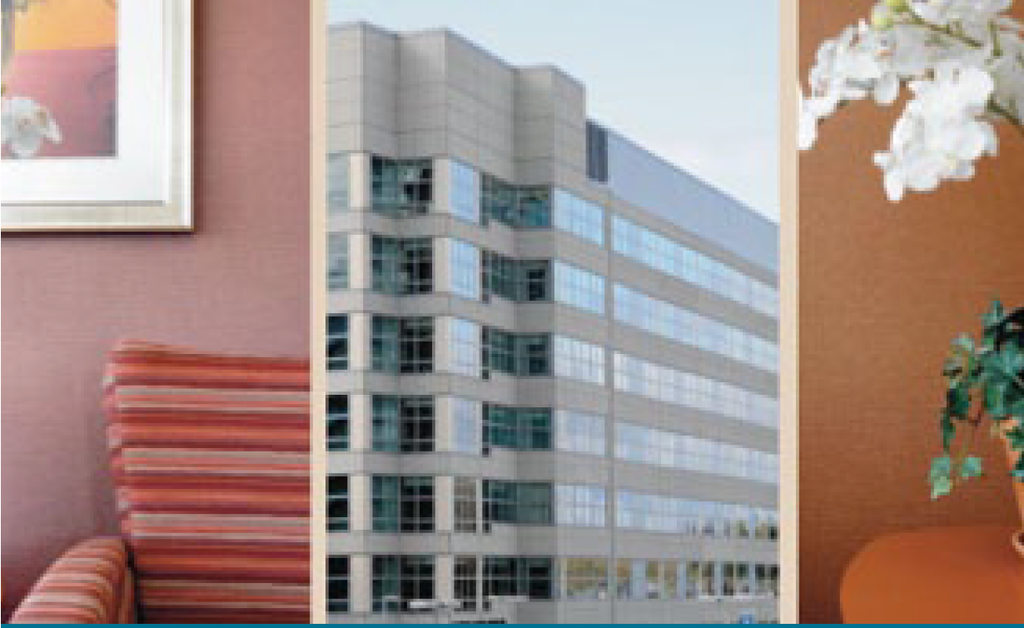When Lehigh Valley Health Network’s designers were seeking materials for the LEED-certified Kasych Family Pavilion in Allentown, Penn., they wanted a wallcovering that was eco-friendly, highly durable, aesthetically pleasing, and easily cleaned to reduce the spread of infections.
“It was a balancing act,” says Chris Richardson, principal of FreemanWhite, the Charlotte, N.C., architectural firm for the seven-story, 340,000-square-foot expansion to Lehigh Valley Hospital-Cedar Crest. “We wanted to be earthfriendly, but also needed a durable material for high-use areas.”
Wallcovering needs for the $241 million, 120-bed tower were diverse. The expansion houses an intensive care unit, a burn center, and an open-heart surgery unit, as well as classrooms, a media center, a pharmacy, new kitchen and cafeteria, medical library and office space. “To meet the rigorous performance criteria, Lehigh needed all the durability of vinyl wallcovering,” said Brenda Rocchino, Lehigh Valley interior designer. “We have had good luck with vinyl wallcovering. It handles impact and hides wear much better than paint. It also improves sound absorption and provides more visual interest.”
More than 20 patterns of textured wallcoverings were selected to create a feeling of warmth in the long corridors and high-tech patient rooms. The design process was very inclusive; nursing staff and patients weighed in on patterns, textures and color palettes. “We took an open space across from the campus and mocked up three different types of patient rooms,” Richardson explains. The feedback helped the team design an aesthetically pleasing, patient-centered experience.
Material choices often come down to looks, and vinyl wallcoverings soundly beat paint on that score. “Vinyl offers a textured appearance you can’t get with normal paint and other materials. Having texture gives it a less institutional look than a flat, painted wall,” says Richardson. “Vinyl is less expensive and more cost effective than other materials like thicker acrylic products.”
When evaluating different vinyl wallcovering options, Richardson says that in terms of sustainability, the most important criteria to the design team were vapor permeability, low VOCs and recyclability. Permeability relates to the ability of the material to allow moisture vapor to pass through and avoid trapping it where it can cause mold and mildew to grow. Having a wallcovering that emits low levels of volatile organic compounds (VOC) helps contribute to higher indoor air quality.
Another benefit of the vinyl wallcovering is its ability to inhibit the growth of pathogens, a very important factor in hospital settings. The wallcovering is also easily cleaned with simple soap and water, reducing the use of harsh chemicals that can degrade indoor air quality. The design team found the right balance in Second-Look® recycled vinyl wallcovering from LSI Wallcovering. Second- Look products are composed of about 20% recycled content, including 10% post-consumer material. As a highperformance Type II vinyl, the wallcovering is expected to last for 10 years or longer and can be repeatedly recycled to keep it out of landfills for decades. Its specification helped contribute to LEED points for low-emitting materials and recycled post-consumer content.
When the wallcoverings need to be replaced, Lehigh plans to reclaim them through the Second-Look program with LSI and recycle them for another lifetime of use. “Our experience in working with Second-Look was very easy,” says Rocchino. “We would definitely use the recycled wallcoverings again.”
Second-Look’s Reclamation program reclaims vinyl wallcovering from a renovation project free of charge, including covering the cost of the freight to bring wallcoverings from any U.S. job site to a Second-Look recycling facility. The program not only diverts waste from the landfill, but ensures a waste stream for Second-Look’s recycled wallcovering products.
Although Richardson says that his clients have varying perceptions about the eco-friendliness of different materials, “Vinyl tends to be as good or better than other materials.” In his experience, vinyl wallcoverings have decisive advantages over paint with less maintenance and greater durability being two of them. “It does offer some additional protection,” he adds, mentioning in particular how well vinyl resists scuffs.
Location Allentown, PA
Owner Lehigh Valley Health Network
Date Completed: 2008
Architect: FreemanWhite
Wallcovering: Second-Look® recycled vinyl wallcovering
Manufacturer: LSI Wallcovering
Vinyl Benifits: Vinyl windows provide superior energy efficiency and optimal thermal properties; resist fading and UV degradation; require minimal maintenance; meet and exceed commercial window ratings in wind load, air and water infiltration resistance testing; provide secure, indirect ventilation with integral screen to keep out pests; furnish easy egress in emergencies; are cost effective; and are developed to allow for easy recycling in production, as well as easy removal during refurbishments and dismantling after their useful life.
Information for this study prepared through interviews and research conducted by Interline Creative Group, Inc. on behalf of The Vinyl Institute©


